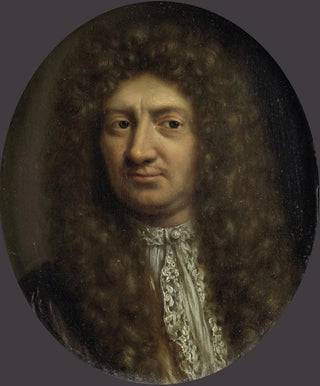Art print | Portrait of a man - Willem van Mieris


View from behind

Frame (optional)
In the fascinating world of art, some works stand out for their ability to capture the very essence of humanity. "Portrait of a Man - Willem van Mieris" is a shining example. This painting, imbued with deep introspection, invites us to delve into the universe of its creator and to discover the subtleties that make this work a true masterpiece. The richness of details and the finesse of the strokes are as many elements that awaken our curiosity and push us to explore the hidden story behind this enigmatic portrait. Every gaze cast on this piece reminds us that art is an open window to emotions and past stories, and "Portrait of a Man" is no exception to this rule.
Style and uniqueness of the work
Willem van Mieris's style is distinguished by his ability to combine realism and elegance. In "Portrait of a Man," the artist deploys a palette of delicate colors, where each shade seems to vibrate under the effect of light. The facial expressions, finely crafted, reveal a psychological depth that transcends the simple portrait. It is not just a physical representation but an exploration of the human soul. The clothing details, carefully rendered, also testify to a meticulous attention to detail characteristic of Baroque art. The composition, balanced and harmonious, guides the viewer's gaze through the work, inviting prolonged contemplation. In sum, the singularity of this piece lies in its ability to evoke complex emotions while remaining rooted in refined aesthetics.
The artist and his influence
Willem van Mieris, born in the 17th century, is often regarded as one of the masters of Dutch portraiture. His work is part of a rich artistic context, where portrait painting experiences unprecedented growth. Influenced by the great masters of his time, van Mieris manages to forge his own style, blending tradition and innovation. His meticulous approach and keen sense of observation allow him to capture not only the appearance of his subjects but also their character and social status. Beyond his aesthetic, van Mieris's art has also influenced many

Matte finish

View from behind

Frame (optional)
In the fascinating world of art, some works stand out for their ability to capture the very essence of humanity. "Portrait of a Man - Willem van Mieris" is a shining example. This painting, imbued with deep introspection, invites us to delve into the universe of its creator and to discover the subtleties that make this work a true masterpiece. The richness of details and the finesse of the strokes are as many elements that awaken our curiosity and push us to explore the hidden story behind this enigmatic portrait. Every gaze cast on this piece reminds us that art is an open window to emotions and past stories, and "Portrait of a Man" is no exception to this rule.
Style and uniqueness of the work
Willem van Mieris's style is distinguished by his ability to combine realism and elegance. In "Portrait of a Man," the artist deploys a palette of delicate colors, where each shade seems to vibrate under the effect of light. The facial expressions, finely crafted, reveal a psychological depth that transcends the simple portrait. It is not just a physical representation but an exploration of the human soul. The clothing details, carefully rendered, also testify to a meticulous attention to detail characteristic of Baroque art. The composition, balanced and harmonious, guides the viewer's gaze through the work, inviting prolonged contemplation. In sum, the singularity of this piece lies in its ability to evoke complex emotions while remaining rooted in refined aesthetics.
The artist and his influence
Willem van Mieris, born in the 17th century, is often regarded as one of the masters of Dutch portraiture. His work is part of a rich artistic context, where portrait painting experiences unprecedented growth. Influenced by the great masters of his time, van Mieris manages to forge his own style, blending tradition and innovation. His meticulous approach and keen sense of observation allow him to capture not only the appearance of his subjects but also their character and social status. Beyond his aesthetic, van Mieris's art has also influenced many






